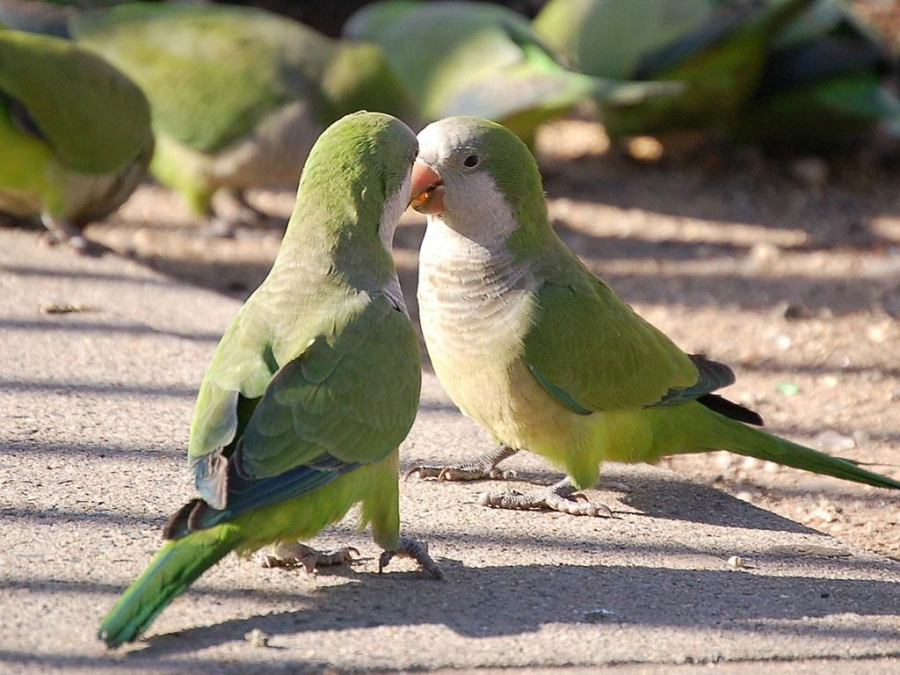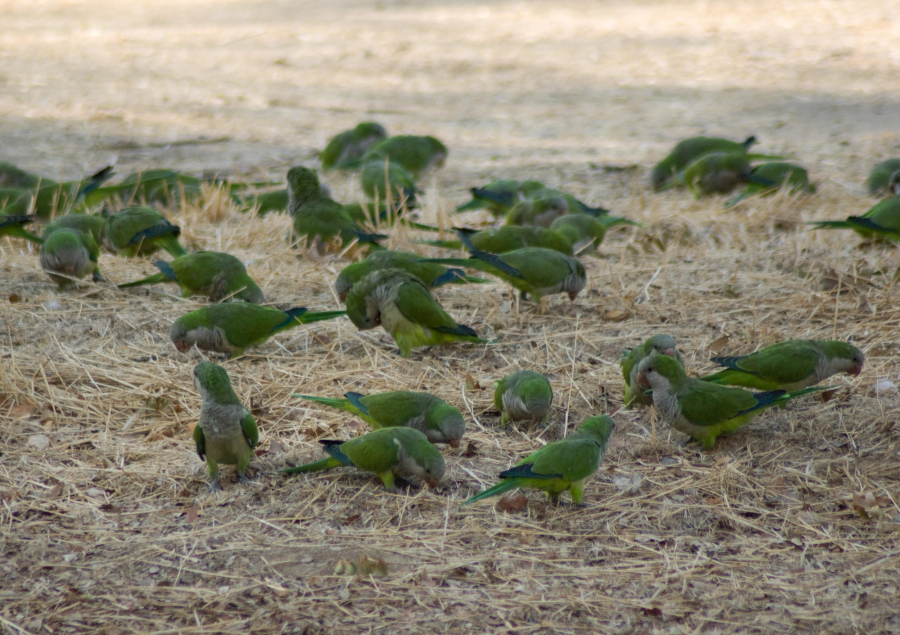The small, brightly colored monk parrot with a silver tuft of feathers on its head is native to Argentina and is common in South America and is very aggressive, can compete with other birds for food and break branches from trees to build nests.

This parrot breed was originally kept as a pet until the government banned its captivity 8 years ago. After that, due to its favorable habitat and lack of natural enemies, monk parrots multiplied rapidly, flying in flocks over the city and building giant nests in trees. These nests have a significant impact on public works and trees in the city, as well as posing a danger to people below. In addition, monk parrots can carry and transmit parrot flu, bird flu and salmonella bacteria to humans.

A city official on environmental issues said monk parrots "have become a concern for many citizens" and "we have received many complaints" in the capital.
In response, the city council has announced plans to cull the monk parrot population, with the aim of balancing the ecosystem and preventing public health risks. An official statement from Madrid said the city had drawn up plans to “humanely control the population” of the parrots, such as preventing eggs from hatching, but did not give a specific number.
Under Spanish law, monk parrots are classified as an invasive species to the natural environment.




















TravelliveMagazine.jpg.jpg)













